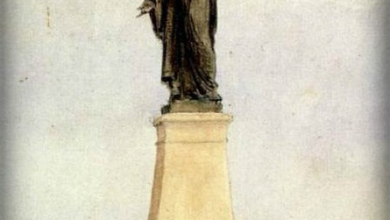Can You Spot the Snow Leopard Camouflaging in this Photo?
Optical illusions and puzzles frequently captivate social media users almost every week.
However, a perfectly timed photograph can speak volumes, especially when it features a formidable predator, setting it up for viral success.
Not long ago, a drone captured an image of a wild animal concealed in an agricultural field in Uttar Pradesh. The photo was shared on Twitter by senior Indian Forest Service officer Ramesh Pandey, who invited his followers to ‘zoom in and get surprised.’
The aerial view revealed a leopard hidden among the crops, its near-perfect camouflage making it difficult to spot.
Recently, Pandey posted another intriguing photo, this time of a rocky landscape, challenging online viewers to find the big cat within it.
The trending image captured a snow leopard, elusive in the snowy, mountainous terrain. The original photo was taken by Ryan Cragun, a resident of Utah.
It grabbed the attention of the IFS officer, who shared it with the caption: “Phantom cat…! They are called ghost of the mountains. Can you spot it? @ryancragun.”
The photograph has since gone viral, leaving many Twitter users intrigued and puzzled over the big cat’s whereabouts.

Leopards, including the snow leopard, are masters of camouflage, and their ability to blend into rocky environments is a key aspect of their survival strategy. Here’s a detailed look at how leopard camouflage works, especially in rocky terrains:
1. **Physical Adaptations**
– **Coloration**: Leopards have a coat that exhibits a pattern of rosettes and spots, which mimics the shadows and textures commonly found in rocky landscapes. This pattern disrupts their outline, making them less discernible.
– **Texture**: The fur of leopards often has a texture that can resemble the roughness of rocks, helping them to blend in seamlessly with their surroundings.
2. **Behavioral Adaptations**
Leopards are strategic in their movements, often walking in ways that minimize noise and visibility. In rocky areas, they move during times when shadows are more pronounced, which enhances their natural camouflage.
– **Stalking and Ambush**: These cats are ambush predators. They use the rocky terrain to hide and get close to their prey, often pouncing from a hidden spot.
3. **Habitat and Environment**
– **Habitat Choice**: Leopards are often found in areas that naturally support their camouflage abilities, including rocky outcrops and mountainous terrains. These environments not only provide excellent camouflage but also offer vantage points for hunting and shelter from the elements or other predators.
– **Environmental Interaction**: In rocky terrains, leopards frequently use caves or crevices for resting and as a place to store their kills, further integrating themselves into the rocky environment.
4. **Evolutionary Perspective**
– **Natural Selection**: Over generations, leopards that were better able to camouflage themselves in their specific habitats likely survived longer and had more offspring. This evolutionary pressure has honed their camouflage capabilities, particularly in rocky areas where these skills are crucial for survival.
5. **Challenges and Threats**
– Despite their adept camouflage, leopards face threats from habitat destruction and poaching. In some regions, human encroachment has reduced their natural habitats, making it harder for them to remain hidden and hunt effectively.
Leopards’ ability to camouflage in rocky environments is a remarkable demonstration of nature’s ingenuity, allowing these solitary and stealthy predators to thrive in some of the most challenging habitats on the planet.




